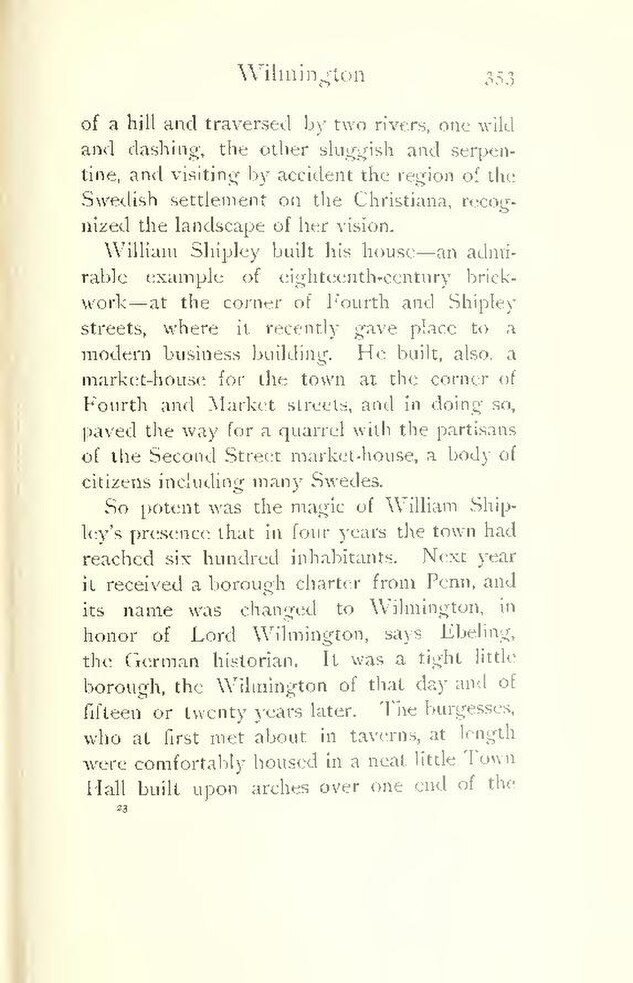of a hill and traversed by two rivers, one wild and dashing, the other sluggish and serpentine, and visiting by accident the region of the Swedish settlement on the Christiana, recognized the landscape of her vision.
William Shipley built his house—an admirable example of eighteenth-century brick-*work—at the corner of Fourth and Shipley streets, where it recently gave place to a modern business building. He built, also, a market-house for the town at the corner of Fourth and Market streets, and in doing so, paved the way for a quarrel with the partisans of the Second Street market-house, a body of citizens including many Swedes.
So potent was the magic of William Shipley's presence that in four years the town had reached six hundred inhabitants. Next year it received a borough charter from Penn, and its name was changed to Wilmington, in honor of Lord Wilmington, says Ebeling, the German historian. It was a tight little borough, the Wilmington of that day and of fifteen or twenty years later. The burgesses, who at first met about in taverns, at length were comfortably housed in a neat little Town Hall built upon arches over one end of the
